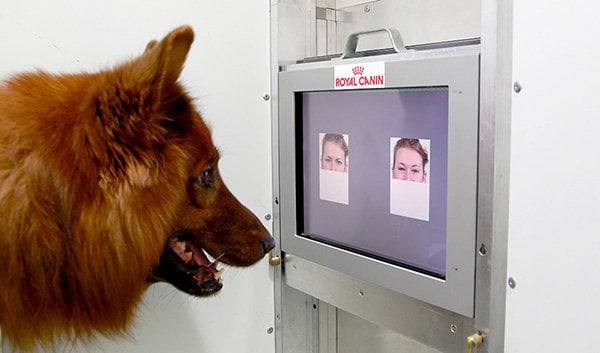Dogs can detect emotions from facial expression

IT’S NO NEWS THAT respond to human voice commands and hand signals, but our canine friends can also tell when you’re happy or angry from facial expressions, according to new research.
“They can tell these two expressions have different meanings, and they can do this not only for people they know well, but even for faces they have never seen before”, lead researcher Ludwig Huber, of the University of Veterinary Science, Vienna, said in a statement.
Being able to understand human emotions would be beneficial for domestic animals like dogs, says Ludwig. “It is likely adaptive for animals to discriminate emotional expressions in others because this allows them to anticipate the behavioural response of the observed individual and to adjust their own behaviour accordingly.”
Facial expression useful for training dogs
Previous attempts have been made to determine if dogs can interpret human emotion, but they had been less conclusive than this one.
In this study, published in Current Biology, 11 pet dogs, mostly border collies, were trained to recognise happy or angry faces of people they knew. Images of the people were partly covered to reveal only the upper or lower half of their faces and the dogs were selected at random to be rewarded when they touched their noses to a screen featuring either happiness or anger.
The dogs were then tested with images of strangers. They successfully discriminated between angry and, more often, happy facial expressions more frequently than would be expected by random chance.
“Dogs have the foundation to learn these skills quite quickly as they are social; as they live with us they learn these emotions,” commented Dr Bradley Smith, an animal behaviourist at Central Queensland University.

This is the experimental set-up used to test whether dogs can discriminate emotional expressions of human faces. (Credit: Anjuli Barber, Messerli Research Institute)
Do dogs have emotions?
While we tend to think of dogs having emotions, there are not many studies to “prove they are experiencing and interpreting emotions”, says Bradley.
Even in this study, the researchers cannot say for sure the dogs know the meaning of the smiling and frowning. They can only report that dogs can tell there’s a difference between the facial expressions.
But Ludwig says it’s likely the dogs associate a positive connotation with a smiling face and aversive behaviour with a frown.
In attempt to further explore the cognition of animals the scientists plan to study how dogs express emotions and how their emotions are influenced by those of their masters and strangers too.
“Dogs and people…it’s one of the most special interspecies relationships, and the interaction and dynamics [between them] is a fascinating thing”, says Bradley.




